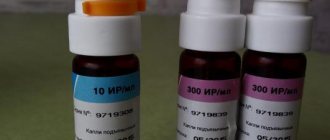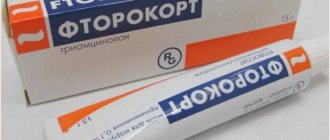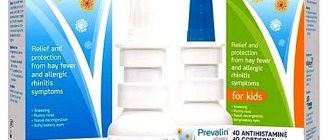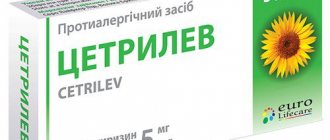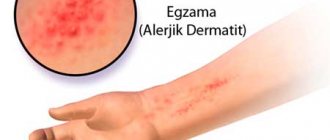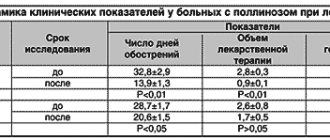Allergen-specific immunotherapy is an effective method for treating allergies. It is used in the treatment of diseases based on sensitivity to pollen or household allergens. The mechanism of action is associated with the introduction of an allergen to the patient. Its dose increases during the first stage of therapy, and remains constant during the second. When using this treatment method, after completing the course of therapy, there is a decrease or complete absence of symptoms of the disease when the patient comes into contact with the causative allergen.
ASIT drug: Staloral “Birch pollen allergen”
Allergen-specific immunotherapy (ASIT) is a method of treating all kinds of allergic diseases, the essence of which is the regular introduction into the patient’s body of small but constantly increasing doses of a substance that causes rhinitis, conjunctivitis, urticaria, etc. Since ASIT affects the causes of the development of pathology, its use allows you to reduce or completely eliminate hypersensitivity to specific compounds, thereby:
- reduce the need for taking antihistamines and other drugs for symptomatic therapy;
- prevent the transition of mild clinical manifestations, for example, a runny nose, into severe forms of allergies - bronchial asthma;
- reduce the risk of developing sensitization to other substances.
Sensitization is excessive sensitivity to certain types of compounds.
After completion of treatment, remission lasts for at least 3–5 years.
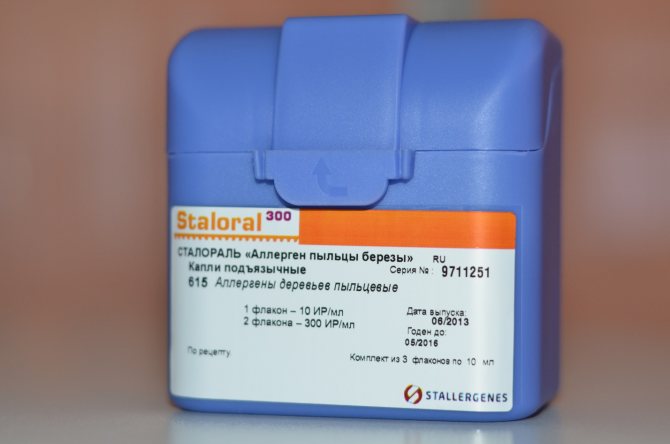
Staloral is used within ASIT in most European countries
To combat intolerance to pollen from deciduous trees of the Birch family, the standardized drug Staloral “Birch pollen allergen” is used. The drug is intended for seasonal therapy and sublingual administration, that is, instillation under the tongue. Although the true mechanism of action of ASIT has not yet been fully established, it has been proven that the use of the drug leads to:
- production of specific antibodies that prevent the synthesis of others, including those produced in response to an allergen entering the body;
- a drop in the level of lgE in the blood;
- reducing the reactivity (ability to respond to environmental changes) of cells directly involved in the development of an allergic reaction;
- strengthening the interaction between T-helper types 1 and 2 (cells responsible for the development of the inflammatory process), which leads to their neutralization, since they inhibit each other’s production.
The drug is prescribed to patients suffering from type 1 allergic reactions to pollen of deciduous trees with seasonal:
- rhinitis;
- conjunctivitis;
- mild or moderate forms of bronchial asthma.
A type 1 allergic reaction is an immune response to the penetration of foreign particles of a certain amino acid composition into the body, and IgE antibodies are synthesized. This starts a chain reaction, resulting in the appearance of signs of allergies, which are characterized by a tendency to progress from minor disturbances to life-threatening conditions: Quincke's edema, bronchial asthma.
Release form
Staloral “Birch pollen allergen” can be purchased in different configurations. Starter set:
- Bottles:
- blue - 1 pc.;
- purple - 1 pc.
- Dispensers - 3 pcs.
Maintenance kit:
- Purple bottles - 2 pcs.
- Dispensers - 2 pcs.
Advantages of the drug over subcutaneous injection of allergens
Many are accustomed to believing that the implementation of ASIT through subcutaneous injections of allergens is more effective than sublingual administration. However, clinical studies have confirmed that:
- subcutaneous and sublingual methods have significant effectiveness compared to placebo (a compound that does not have any medicinal properties, but has a certain therapeutic effect due to the patient’s confidence in its effectiveness);
- both methods of introducing the allergen are almost equivalent in effectiveness;
- the sublingual method has a higher safety profile.
Thus, instilling allergens under the tongue is an effective and safe method of performing ASIT, which is in no way inferior to injection, and in some situations even surpasses it.

Subcutaneous ASIT requires significant labor costs associated with regular visits to a medical facility
Allergy and the fight against it using ASIT - video
Staloral "Mite Allergen": instructions
According to experts, the most effective treatment is in the early stages of the disease. There is no need to delay, wait until the allergy disappears on its own. Each of the kits of such a product as staloral “Mite Allergen” contains instructions, but the doctor can correct the scheme. If you have ever taken beta-blockers, you must tell your doctor about this.
Allergy treatment begins with an initial course. First of all, you need to use a small bottle - ten milliliters. It contains a low concentration of allergen extract, so you need to start with that. The drug is taken once a day before breakfast. Press the dispenser once, aiming it under your tongue. The drops must be kept there for two minutes and then swallowed. Then the dose is increased until it is normally tolerated by the person. When the small bottle runs out, open the one with three hundred milliliters, the intake follows the same scheme.
The initial course can last from nine days to three weeks, after which you need to start a maintenance course.
Support is provided individually for each person. It is adjusted by the doctor based on the characteristics of the body and tolerability of the drug. Usually the scheme is as follows: the drug is taken every day before breakfast. Everything happens exactly as described above: the product is sprayed under the tongue, pressing the dispenser can be from four to eight. Or three times a week, eight presses on the dispenser, in the morning before breakfast.
If for some reason you stop using staloral, then remember:
- missed a dose for less than a week - continue at the same dosage at which you started missing;
- if you missed more than seven days, then you have to start over - one injection, and then increase the dosage.
Who is Staloral suitable for?
Due to the peculiarities of the drug’s use, it is prescribed:
- patients with a high level of responsibility, since the medication must be taken daily;
- children who are afraid of injections;
- patients who do not want or are unable to frequently visit a medical facility;
- patients who underwent a course of subcutaneous ASIT, but were forced to abandon it due to the development of systemic (general) reactions of the body.
However, there are special categories of allergy sufferers:
- Pregnant women. It is not recommended to start ASIT during pregnancy.
- If conception occurs during the first stage of therapy, use of the drug should be discontinued.
- When pregnancy occurs during maintenance therapy, the possible benefits of ASIT are assessed based on the general condition of the patient.
1 dose of the drug contains 5.9 mg of NaCl, which must be taken into account by patients on a diet with reduced salt intake.
Release form and conditions of release from pharmacies
Available in the form of sublingual drops in a 10 ml glass bottle. Manufacturer: Stallergen, France. The basis of the drug is an allergen extract from birch pollen. Allergen concentration 10 IR/ml or 300 IR/ml (IR - reactivity index. The concept is used to standardize allergens). The bottles are tightly closed with rubber stoppers; on top of the stoppers there are aluminum caps with blue and purple plastic lids. The colors of the caps correspond to the dosage of the allergen: blue - 10 IR/ml, purple - 300 IR/ml. It must be remembered that one bottle of the drug contains 590 mg of sodium chloride (in 10 ml of the drug). This fact must be taken into account when a course of ASIT is planned in patients on a salt-restricted diet, mainly in children.
Kit options:
Each kit contains instructions for use. The drug is dispensed from pharmacies strictly according to prescription. When using it, it is necessary to strictly follow the storage requirements: temperature from 2 to 8 ° C, the bottles must be in an upright position, and there must be a protective ring on the dispenser. If storage conditions are not observed, the drug may become unusable.
Administration of the drug under the tongue (sublingually) is not inferior in effectiveness to the injection method of ASIT. This method also helps to develop better tolerance to allergens. Therapy is most effective if treatment begins at the initial stage of the disease. The effectiveness and safety of this drug in children under 5 years of age have not been studied.
Instructions
It is recommended to start taking the drug Staloral “Birch pollen allergen” no later than 2 or 3 months before the start of flowering of the plant to which the pollen is allergic, and continue until the end of this period. Treatment is repeated annually for 3–5 years. If after the first course of immunotherapy the intensity of clinical manifestations does not decrease, the rationality of conducting ASIT in subsequent years is considered.
Attention! The effectiveness of immunotherapy is much higher when it is started in the early stages of pathology development.
As part of initial therapy, the bottle with the blue cap is used first. The allergen extract it contains has a reactivity index of 10 IR/ml. The drug dosage regimen for each patient is developed individually. It involves gradually increasing the dose up to 10 consecutive injections. Only after this do they move on to a bottle with a purple cap; the allergen activity in it is 300 IR/ml. Treatment is continued, gradually increasing the dose, stopping at the maximum normally tolerated by the patient. As a rule, it is 4–8 injections.
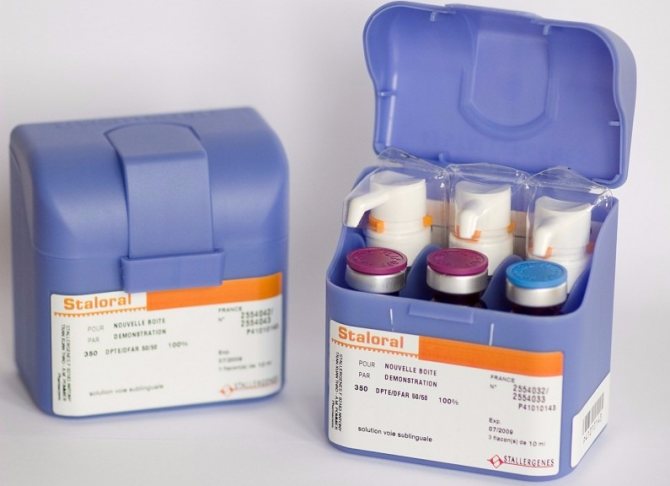
The starter package of the drug Staloral “Birch pollen allergen” contains two types of bottles intended for initial and maintenance therapy
For maintenance therapy, only a bottle with a purple cap is used. The drug is administered daily.
Important! Amendments to the number of injections are made purely individually, and solely based on the patient’s response to the medication.
Features of use:
- The medicine is used from the morning before breakfast. It is dropped under the tongue and kept in the mouth for two minutes, then swallowed.
- After the procedure, wash your hands thoroughly to avoid introducing allergen particles into your eyes.
- To improve the tolerability of the drug, patients, especially those with moderate bronchial asthma, are often prescribed additional symptomatic therapy, which consists of taking: H1-antihistamines (Diphenhydramine, Suprastin, Tavegil, Zyrtec, Telfast, Hydroxyzine, etc.)
- B2-adrenergic agonists (Salbutamol, Fenoterol, Ventolin, Spiropent, Berotec, Clenbuterol, etc.
- Corticosteroids (Prednisolone, Medrol, Beclomethasone, Pulmicort, Rhinocort, Nazacort, etc.)
- Mast cell membrane stabilizers (Cromolyn, Nalkrom, etc.)
The drug is stored in the refrigerator at a temperature of 2–8°C. If it is necessary to transport the medicine, use special bags and make sure that the opened bottle is always in an upright position.
First appointment
- Remove the blue plastic cap from the initial therapy bottle.
- Remove the metal cap by pulling the protruding ring.
- Pull out the rubber plug.
- Remove the dispenser and place it on the open bottle, pressing firmly on top. A characteristic click indicates fixation.
- Remove the orange fuse.
- Apply 5 strong pressures over any container to achieve dosing accuracy.
- Place the tip of the dispenser under the tongue and press it firmly as many times as prescribed by the doctor.
- Wipe the tip and put on the fuse.
When switching to maintenance therapy, you should perform the steps in the same sequence, but with a bottle with a purple plastic cap.
Resumption of interrupted therapy
The medication is interrupted when:
- performing surgical interventions on the oral cavity, including tooth extraction;
- after;
- serious damage to the gums, in particular periodontitis and gingivitis;
- mycoses of the oral cavity;
- tooth loss.
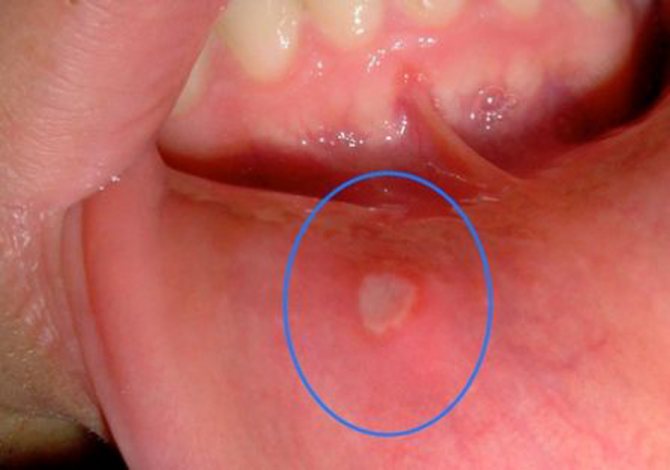
Afta - minor ulceration of the oral mucosa at the site of injury
After the inflammatory process subsides, therapy is resumed.
- If you miss less than 7 days, ASIT is continued in the prescribed manner.
- If you miss more than a week, you should start therapy by administering 1 dose from a bottle with the same reactivity index that was used before stopping treatment, and methodically increase the number of presses until the optimal dose is reached.
- Long-term pass requires specialist advice.
Regimen and dosage
Dosage regimens and treatment with this drug are the same for all age categories, but changes can be made depending on the patient’s tolerability and level of sensitivity to this medication. Adjustment of the drug administration regimen by the attending physician occurs depending on the patient’s tolerability of therapy. It is best to start the course before flowering, about two or three months, and continue throughout the entire period. Courses of allergen-specific immunotherapy are recommended for at least 3-5 years in a row. If, after a course of treatment during the first flowering season, the patient does not notice an improvement in condition and a decrease in the severity of the symptoms of the underlying disease, the indications should be reconsidered and a decision should be made on the need for ASIT.
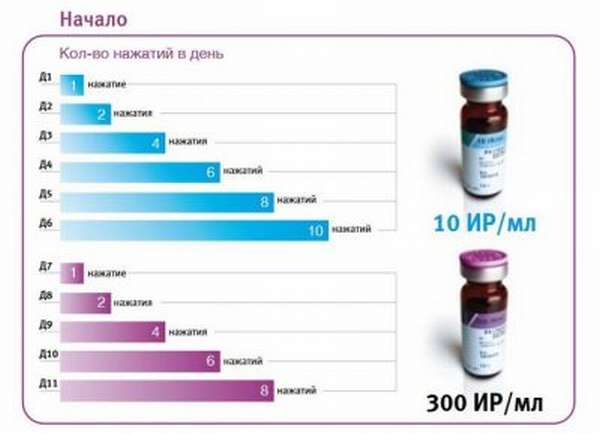
Treatment consists of: an initial course (increasing the dose) and a maintenance course (taking a maintenance dose):
- 1. It is customary to begin increasing the dose by taking the drug daily from a bottle with a blue cap (dosage 10 TS/ml). Start with one click on the dispenser and gradually increase the number of clicks to five. One click on the dispenser - about 0.2 ml of the drug. This is followed by daily administration of the drug from a vial with a purple cap (dosage 300 TS/ml), also starting with one press and gradually increasing to a well-tolerated amount. The dose escalation phase lasts 9 days. During the initial period, an individual maximum dose is achieved for each - from 2 to 4 presses daily, dosage 300 IR/ml (purple bottle). When the maximum dose is reached, they proceed to maintenance therapy (second stage of therapy).
- 2. Maintenance therapy with a constant dose. Use a dosage of 300 TS/ml (purple bottle). The individual maximum dose that was achieved in the first stage of therapy is continued. It is recommended to take the drug according to the scheme - from 2 to 4 clicks on the dispenser daily or 4 clicks 3 times a week from a purple bottle.
A regimen with daily dosing of the drug is more effective, since it is associated with a more responsible approach to treatment than taking the drug 3 times a week:
| Therapy day | Drug dose | Number of clicks | Dose, IR |
| 1 | 10 TS/ml bottle with blue cap | 1 | 2 |
| 2 | 10 TS/ml bottle with blue cap | 2 | 4 |
| 3 | 10 TS/ml bottle with blue cap | 3 | 6 |
| 4 | 10 TS/ml bottle with blue cap | 4 | 8 |
| 5 | 10 TS/ml bottle with blue cap | 5 | 10 |
| 6 | 300 IR/ml vial with purple cap | 1 | 60 |
| 7 | 300 IR/ml vial with purple cap | 2 | 120 |
| 8 | 300 IR/ml vial with purple cap | 3 | 180 |
| 9 | 300 IR/ml vial with purple cap | 4 | 24 |

Contraindications
The use of Staloral is contraindicated for:
- hypersensitivity to any of the excipients included in the medication: glycerol;
- sodium chloride;
- mannitol
In addition, Staloral “Birch pollen allergen” cannot be used while taking β-blockers:
- Atenolol;
- Propranolol;
- Tenormil;
- Anaprilin;
- Lokren;
- Metocard;
- Concor;
- Corvitol;
- Biprolol;
- Vasocardin;
- Metoprolol;
- Nebilet;
- Egilok, etc.
The drug is prescribed with great caution to patients taking:
- tricyclic antidepressants: Azafen;
- Amitriptyline;
- Fluoroacyzine, etc.
- Isocarboxazid;
When undergoing a course of immunotherapy, vaccination is possible, but the doctor must be aware that the patient is taking Staloral.
Possible side effects
Taking the drug may be accompanied by undesirable effects, especially if the recommended dose is exceeded.
- Local reactions. They quickly disappear on their own and, in general, are an integral part of the treatment, because it is impossible to understand what maximum dose of medication is well tolerated without exceeding it, and therefore without encountering allergy symptoms. Therefore, usually in such cases, serious adjustments to the immunotherapy regimen are not made. The question of the need to continue it is raised only when adverse reactions occur frequently. These include:
- itching and swelling of the lips or mucous membrane under the tongue;
- burning sensation or discomfort in the mouth and throat;
- diarrhea;
- stomach ache;
- excessive salivation or, conversely, insufficient saliva production;
- nausea.
- Systemic reactions (rhinitis, urticaria, including generalized, conjunctivitis, asthma, Quincke's edema, anaphylaxis, laryngeal edema). Such violations are rare, but if they occur, you should immediately take antihistamines or corticosteroids and consult a doctor to make changes to the ASIT regimen or reconsider the possibility of its implementation.
For mild or moderate systemic reactions, it is usually recommended to return to the previous well-tolerated dose and maintain it for 2 days. After this, the build-up continues.
It is extremely rare for patients to experience:
- headache;
- asthenia, manifested by: increased fatigue;
- mood instability;
- sleep disorders;
- exhaustion.
Any adverse events that develop should be reported to your doctor.
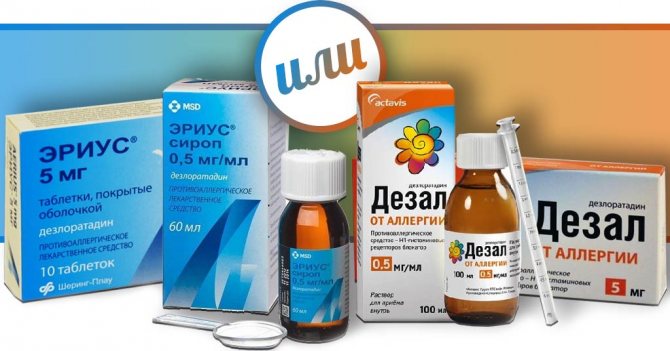
People undergoing ASIT must always have antiallergic medications with them.
Directions for use and doses
The effectiveness of ASIT is higher in cases where treatment is started in the early stages of the disease.
The dosage of the drug and the scheme of its use are the same for all ages, but can be changed depending on the individual reactivity of the patient.
The attending physician adjusts the dosage and treatment regimen in accordance with possible symptomatic changes in the patient and individual response to the drug.
It is advisable to start treatment no later than 2-3 months before the expected flowering season and continue throughout the entire flowering period.
Treatment consists of two stages: initial and maintenance therapy.
1. Initial therapy begins with a daily dose of the drug at a concentration of 10 IR/ml (blue bottle cap) with one click on the dispenser and gradually increases the daily dosage to 10 clicks. One press of the dispenser is about 0.1 ml of the drug.
Next, they proceed to daily administration of the drug at a concentration of 300 IR/ml (purple bottle cap), starting with one press and gradually increasing the number of presses to the optimal (well tolerated by the patient). The first stage can last 9 - 21 days. During this period, the maximum dosage is reached, individual for each patient (from 4 to 8 presses daily of the drug with a concentration of 300 IR/ml), after which they proceed to the second stage.
2. Maintenance therapy with a constant dose using a vial of concentration 300 IR/ml.
The optimal dose achieved in the first stage of initial therapy continues to be taken in the second stage of maintenance therapy.
Recommended dosage regimen: from 4 to 8 presses on the dispenser daily or 8 presses 3 times a week.
- Duration of treatment
Allergen specific immunotherapy is recommended to be carried out in the above two-stage courses (2-3 months before the expected flowering season until the end of the season) for 3-5 years.
If, after treatment, improvement does not occur during the first flowering season, the feasibility of ASIT should be reconsidered.
- Taking the drug:
Before taking the drug, make sure that: the expiration date has not expired and the bottle of the required concentration is used.
It is recommended to take the drug in the morning before breakfast.
The drug should be dropped directly under the tongue and held for 2 minutes, then swallowed.
Children are recommended to use the drug with the help of adults.
To ensure the safety and integrity of the drug, the bottles are hermetically sealed with plastic caps and rolled with aluminum caps.
For first use, open the bottle as follows:
- Tear off the colored plastic cap from the bottle.
- Pull the metal ring to remove the aluminum cap completely.
- Remove the rubber plug.
- Remove the dispenser from the plastic packaging. Holding the bottle firmly with one hand, with the other hand, pressing firmly on the top flat surface of the dispenser, snap it onto the bottle.
- Remove the orange protective ring.
- Press the dispenser firmly 5 times over the sink. After five clicks, the dispenser dispenses the required amount of the drug.
- Place the dispenser tip in your mouth under your tongue. Press the dispenser firmly as many times as prescribed by your doctor to obtain the required amount of the drug. Hold the liquid under your tongue for 2 minutes.
- After use, wipe the pipette tip and put on the protective ring.
For subsequent use, remove the protective ring and follow steps 7 and 8.
- Taking a break from taking the drug
If you skip taking the drug for a long time, you should consult your doctor.
If you miss taking the drug for less than one week, it is recommended to continue treatment without changes.
If the gap in taking the drug was more than one week at the initial stage or during maintenance therapy, it is recommended to carry out treatment again with one click on the dispenser, using the same concentration of the drug (as before the break), and then increase the number of clicks, according to the scheme of the initial stage of therapy to the optimal well-tolerated dose.
Preventing allergies with Staloral
It is known that over time the disease begins to manifest itself with increasingly serious and dangerous symptoms. Staloral "Birch pollen allergen" can be used to prevent the progression of hay fever, for example, from rhinitis to bronchial asthma or from mild forms of bronchial asthma to the development of status asthmaticus, etc. Therefore, all patients suffering from intolerance to pollen of deciduous trees of the Birch family are recommended as ASIT can be started earlier.
Analogues of the drug
An analogue of the drug Staloral “Birch pollen allergen” is Fostal “Tree pollen allergen”, which contains an extract of pollen not only from birch, but also from other representatives of this family:
- alders;
- hazel;
- hornbeam
Unlike Staloral, Fostal is intended for subcutaneous administration. However, the effectiveness of both drugs is the same.
Also recently, a line of Antipollin drugs appeared on the Russian market. Mixed trees contain allergens:
- birch;
- poplars;
- elm;
- oak;
- maple
The drug Sevapharma “Early Spring Mixture” has a similar effect. It contains pollen extracts:
- alders;
- birch;
- hornbeam;
- hazel;
- ash;
- and you.
Analogs of the drug Staloral - gallery

Fostal "Tree pollen allergen"
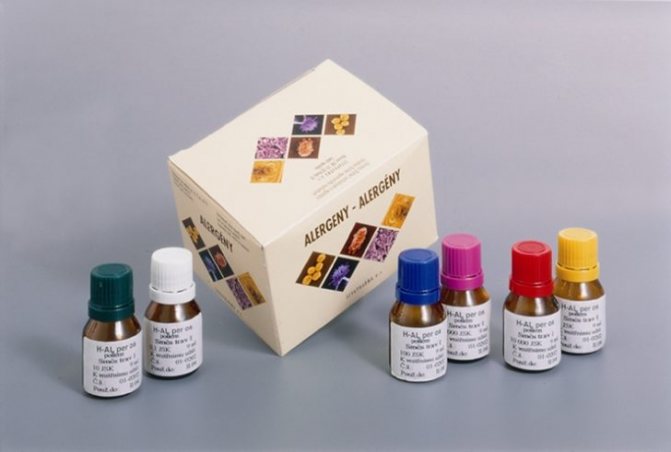
Sevapharma "Early spring mixture"
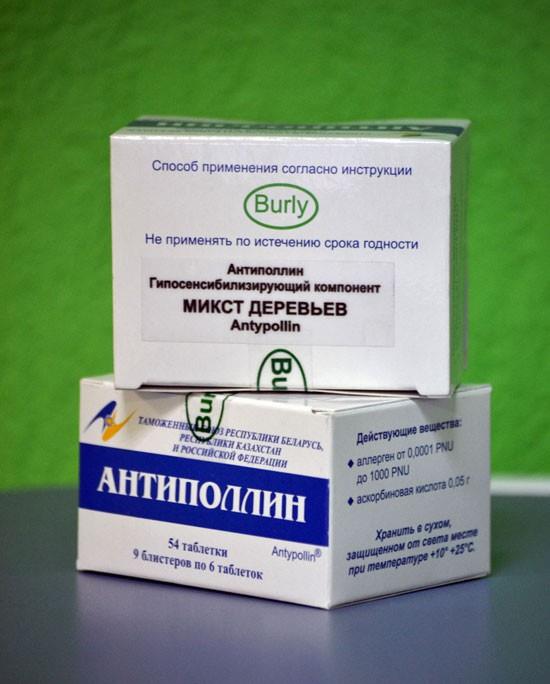
Antipolline Mixed trees
Manufacturers
- The drugs Staloral “Birch pollen allergen” and Fostal are produced by the French pharmaceutical company JSC Stallergen.
- Antipollin "Mixt trees" is manufactured by Burli LLP (Kazakhstan).
- “Early Spring Mix” is produced in the Czech Republic by the company Sevafarma.
